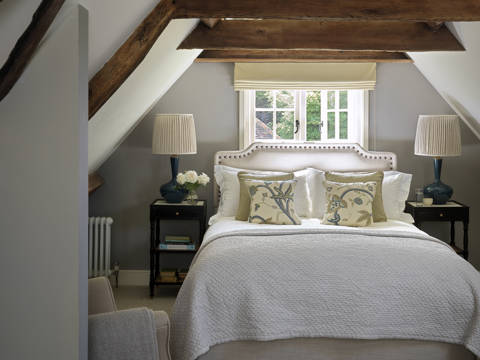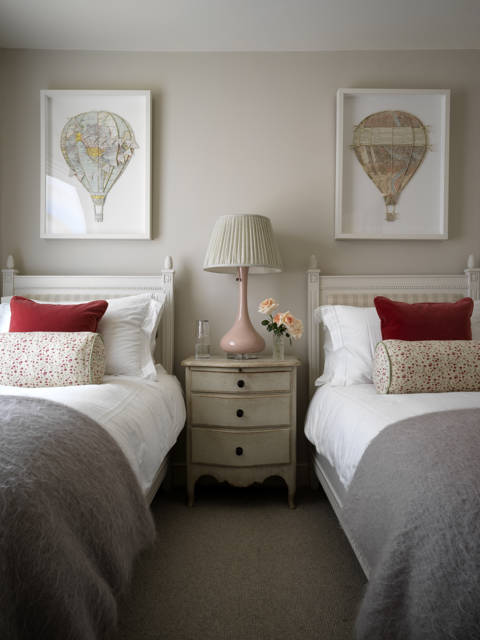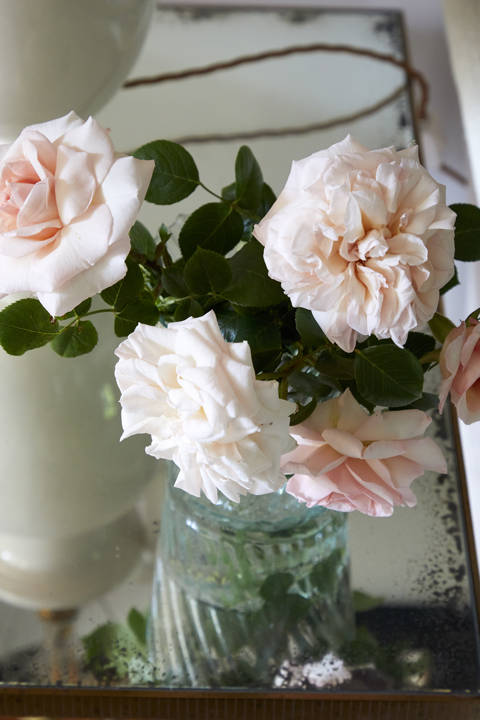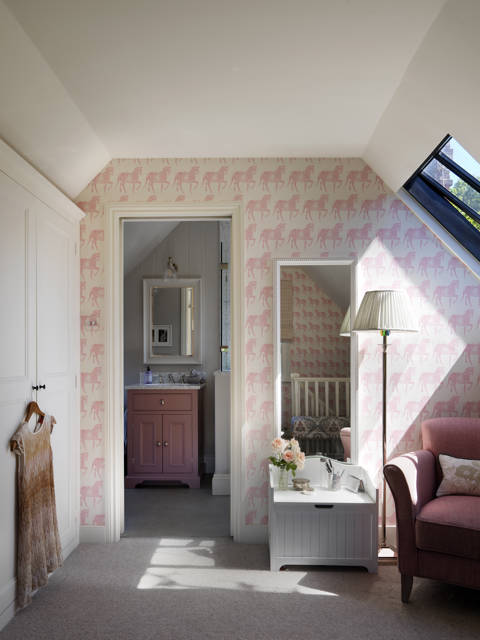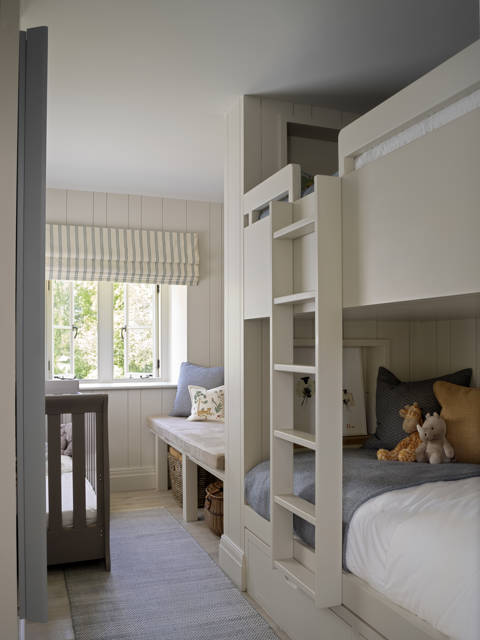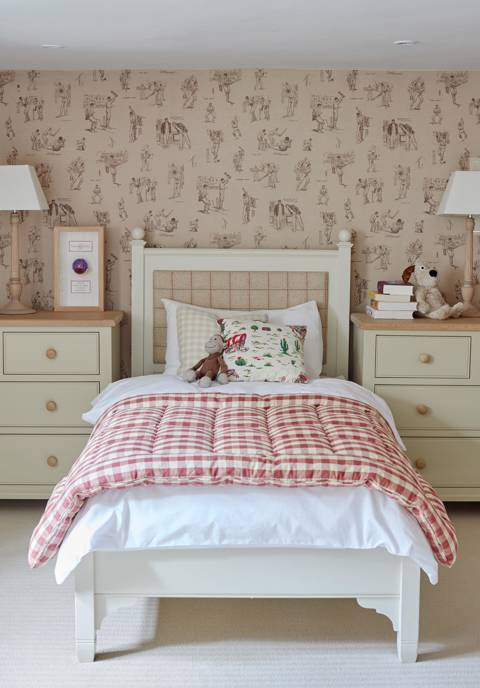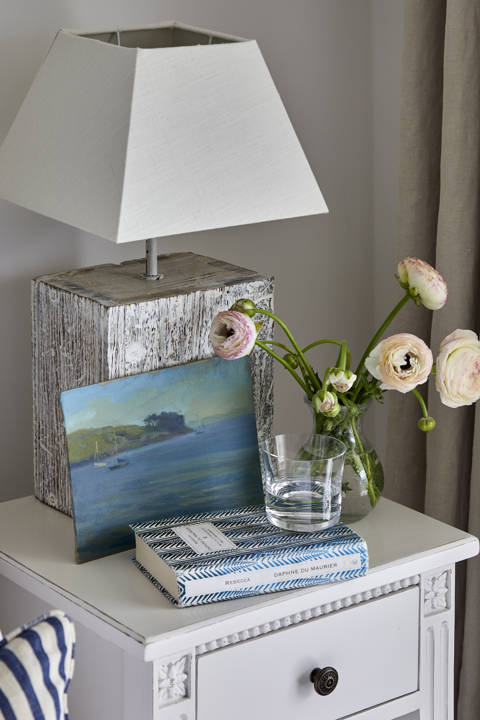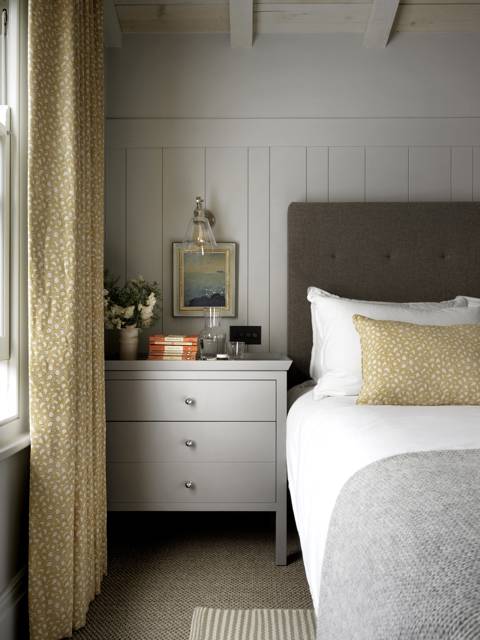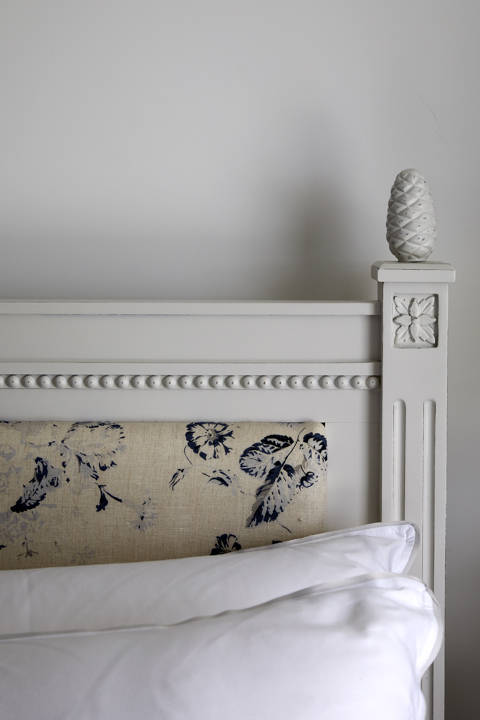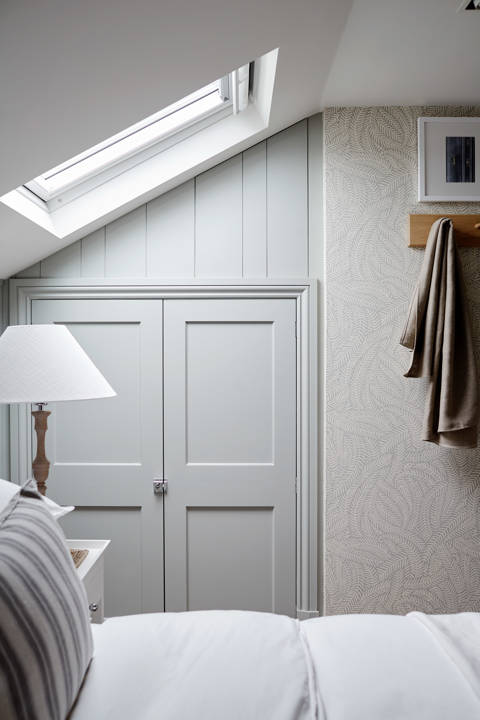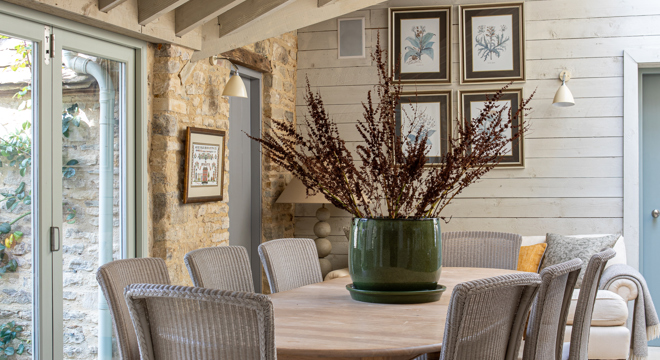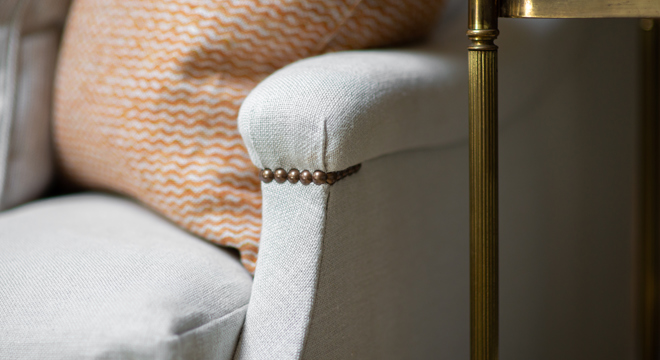How to Design a Child-Friendly Home
Designing a family home that is suitable for children in terms of both aesthetics and practicalities is a lot of fun, but it can be tricky to know where to begin. The Sims Hilditch team has put together some key considerations to help you get started.
Wall decor
A home that is easy to keep clean is a must-have. Farrow and Ball has a great range of washable and wipeable paints which are brilliant for children’s playrooms and bedrooms. These come in both a glossy and a chalky finish. For playrooms in particular, these paints are generally preferable to wallpaper, which can be difficult to clean and expensive to replace. Tongue and groove is also a great alternative.
Upholstery and soft furnishings
We recommend a fabric with a chunkier weave when upholstering furniture in a playroom, family room or child’s bedroom. De le Cuona has some beautiful linens in a range of colourways which work well here and are brilliant at disguising any grubbiness at the base of a sofa, ottoman or armchair. These can also be stain guarded.
To further protect a sofa, you might consider using throws or covering the arms with sleeves. These can be taken off and washed, keeping the sofa good as new. It is wise to avoid fabrics such as velvets and silks when planning the upholstery in a child’s or family room. These are fragile and are best saved for formal sitting rooms or entertaining spaces suited for adults.
Flooring
A hard floor is the obvious choice when looking for something that will withstand the wear and tear of muddy shoes, spills and stains in the wider house. A smart limestone tile design is a Sims Hilditch staple as it looks incredibly smart and is easy to clean and protect. See our tips on how to do this in our journal on Pet-Friendly Homes. A clever alternative is to opt for a rustic reclaimed wooden floor. Any wear and tear only serves to enhance the charming patina of the wood, which gets better with age.
For a slightly softer look, a rug can be placed over the hard floor. To avoid any damage, we recommend having the fabric of the rug stain guarded. This is something we do for our clients if required, but it is also possible to purchase a stain guard ‘off the shelf’ or online.
Storage
Low level open storage with removable baskets is a good idea as it is easily accessible for children. For homes which are limited on space, it is worth considering how you might incorporate intelligent storage solutions into each room. Hidden storage in the steps leading to a bunk bed, upholstered ottomans at the end of a bed which double up as stools, and shelving underneath coffee tables are all good ideas.
Pattern and texture
Stripes, checks and stars tend to be a good choice when injecting pattern into a child’s bedroom. These fabric designs bring an element of fun to the space without being too ‘childish’, helping the décor to stand the test of time. You might also use the window treatments to bring some fun to the space. We tend toward blackout blinds for children’s bedrooms to make sure they are able to get a good night’s sleep. A gently patterned design which picks out some of the other colours in the room works well.
Multi-functional spaces
With home study having been a reality for most children over the last two years, it has become necessary to incorporate a quiet space for them to work in most family homes. A desk and a suitable chair along with appropriate task lighting are essential.
Equally as important is access to a playroom. A playroom often calls for freestanding furniture which can be moved around as necessary, creating the appropriate space for play and social activity. We like to use furniture by Chelsea Textiles and OKA here. A sofa that doubles up as a bed is also a useful addition to the space to accommodate any friends who are invited over to stay.
Planning for the future
While we love wallpaper, we tend to find that paint is a more versatile option when designing a child’s bedroom for the long term. This is because as a child gets older and their tastes change, it is much easier to update. It is also useful to consider details like plug socket placement early on in the life-cycle of the room, positioning the sockets in such a way that will eventually allow for a double bed with two bedside tables, or a desk with a lamp. An interior designer or a lighting specialist will be able to help you with this.
